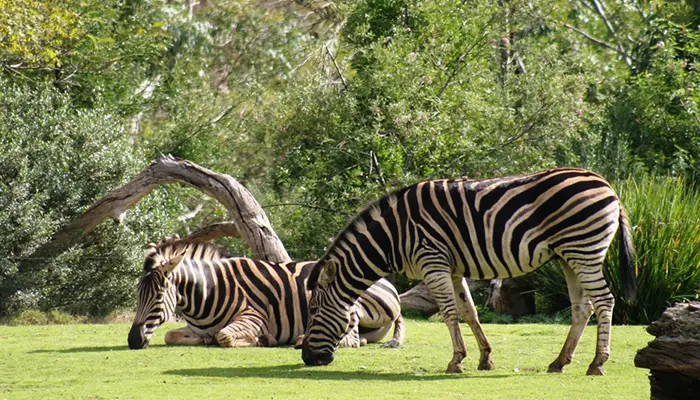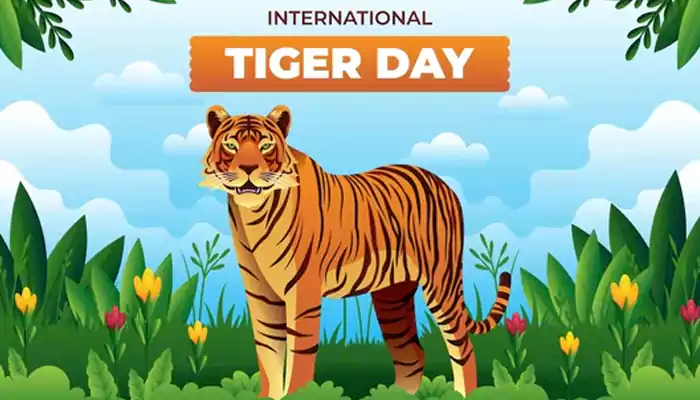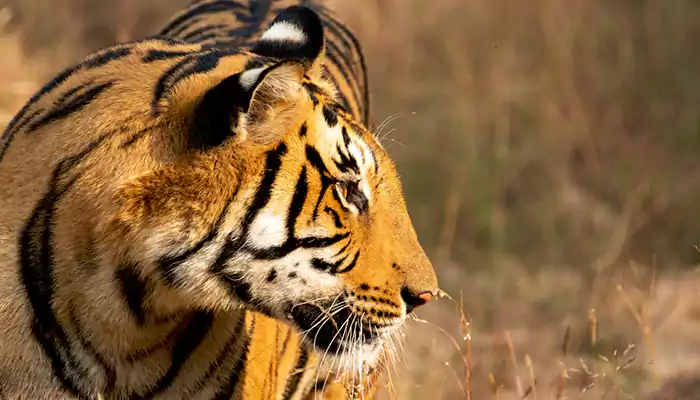National Zoo Lovers’ Day: From Zoo To Safari- The Rise Of Open-Range Zoos
- Admin
- 1 year ago
- 4 minutes read

Let's celebrate National Zoo Lovers Day (April 8th) by taking a look at the rising popularity of open-range zoos.
In the evolution of wildlife conservation and public education, the transition from traditional zoos to open-range zoos marks a significant shift in our relationship with the natural world. This transformation reflects a growing awareness of animal welfare, ecological balance, and the desire for more authentic experiences of nature. Open-range zoos, also known as safari parks, offer a glimpse into the future of wildlife appreciation and conservation, where the barriers between humans and animals are reimagined to foster a deeper understanding and respect for the natural world.
The Traditional Zoo: A Brief History
The concept of the zoo has ancient roots, with early versions appearing as menageries owned by the wealthy and powerful to display their prestige and control over nature. However, it wasn't until the 19th century that public zoos began to emerge, designed for education and entertainment. These traditional zoos were characterized by their use of cages and enclosures, which separated visitors from animals, often without regard for the species' natural habitats or behaviours. Over time, these practices have been increasingly scrutinized for their ethical implications and impact on animal welfare.
The Ethical Awakening
The late 20th century heralded a new era of environmental and ethical awareness. Documentaries, research, and activist campaigns highlighted the plight of animals in captivity and their complex needs. The public began to question the morality of keeping wild animals in confined spaces that bore little resemblance to their natural habitats. This period of ethical awakening spurred the zoological community to rethink and innovate the way they housed and displayed animals.
Open-Range Zoos: A New Paradigm
Open-range zoos emerged as an answer to the growing demand for more ethical and naturalistic settings for captive animals. These expansive parks are designed to mimic the natural habitats of the species they house, allowing animals to roam in large, open spaces that encourage natural behaviours. Visitors typically view the animals from a distance, often from vehicles or designated pathways, minimizing stress and disruption to the animals. This approach not only benefits the animals but also provides a more authentic and educational experience for visitors.
The Benefits of Open-Range Zoos
Open-range zoos offer numerous advantages over their traditional counterparts. Firstly, they prioritize the welfare of the animals by providing environments that cater to their physical and psychological needs. This can lead to healthier, more content animals and longer lifespans. Secondly, these zoos play a crucial role in conservation efforts, offering refuge for endangered species and participating in breeding programs to help replenish wild populations. Lastly, they serve as powerful educational tools, immersing visitors in near-natural environments and fostering a deeper appreciation and understanding of wildlife and conservation issues.

Let's explore a few notable examples from around the world.
San Diego Zoo Safari Park, USA
Serengeti Park, Germany
Werribee Open Range Zoo, Australia
Dubai Safari Park, UAE
These open-range zoos and safari parks worldwide successfully combine conservation, education, and visitor experience. By prioritizing animal welfare and habitat simulation, these institutions not only provide a more ethical alternative to traditional zoos but also play a crucial role in the global effort to conserve biodiversity and educate the public about the importance of ecological stewardship.
From zoo to safari, the transformation of wildlife parks reflects a broader shift in our understanding of and relationship with the natural world. Open-range zoos represent a more ethical, educational, and sustainable approach to wildlife conservation and public engagement. By prioritizing the needs of animals and the integrity of natural ecosystems, these institutions offer hope for the future of both captive and wild species. As we continue to grapple with the challenges of conservation and animal welfare, the evolution of the zoo into an open-range safari park stands as a testament to the potential for change and progress in our interactions with the planet's remarkable biodiversity.












